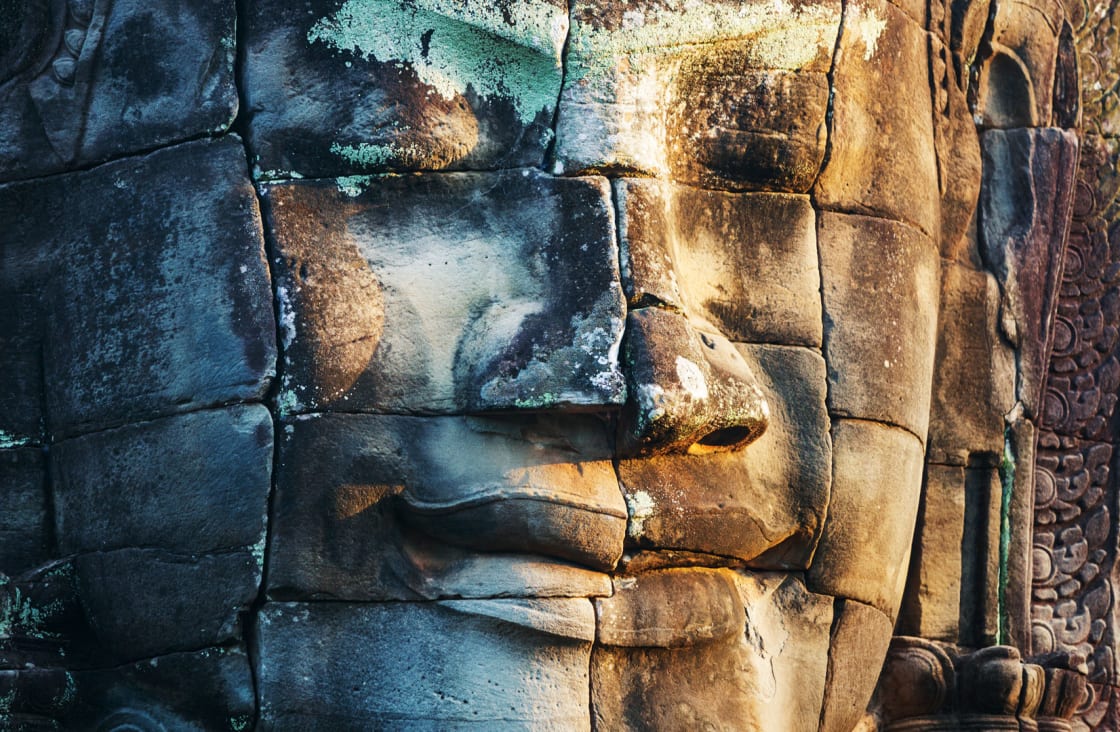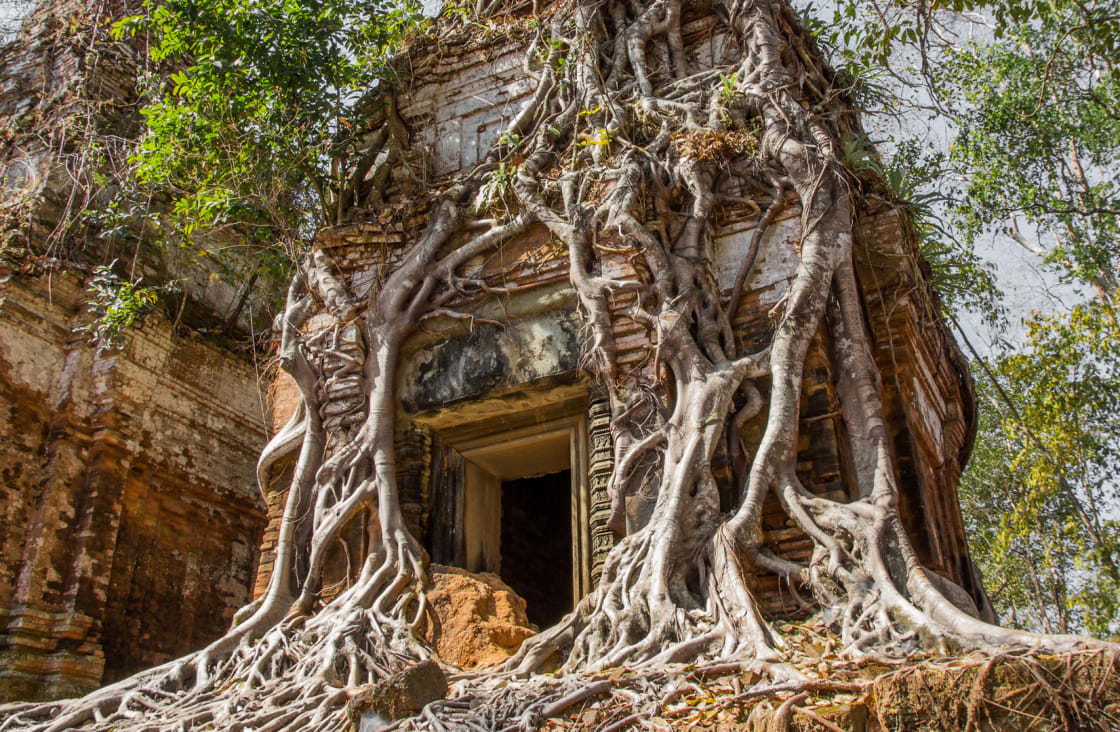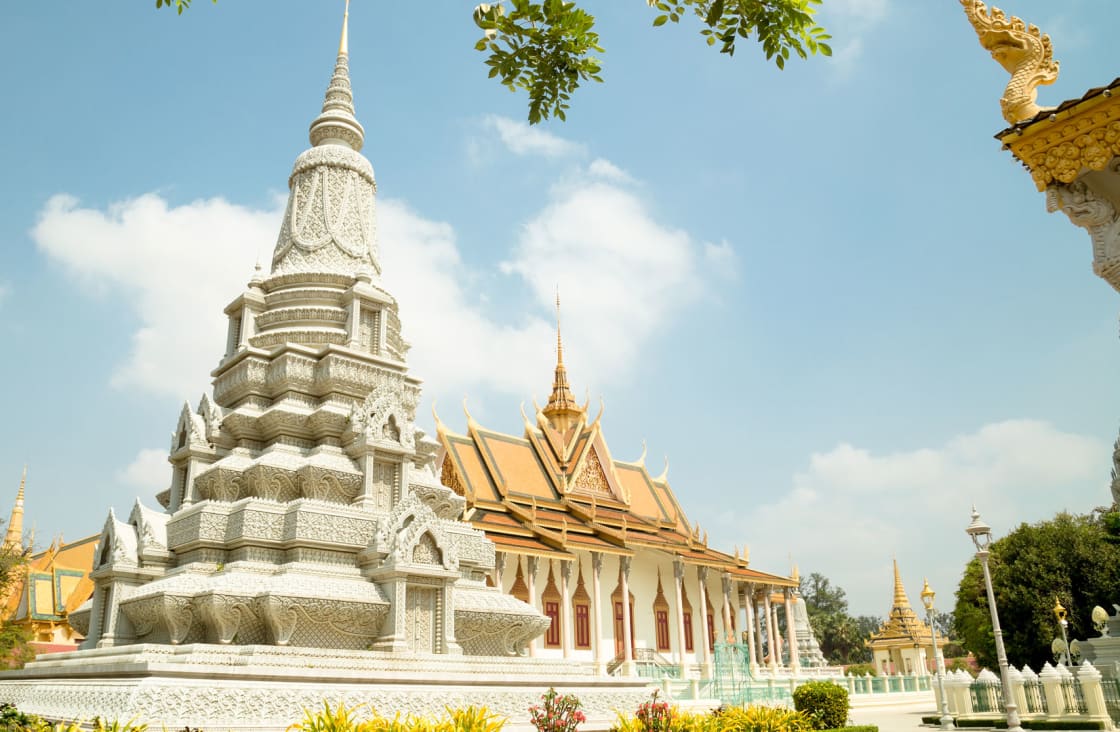
As it slowly recovers from the Khmer Rouge’s reign of terror, Cambodia is becoming a rising tourist destination. The stunning temples of Angkor are the obvious draw for most visitors, but the country has plenty more to offer including tropical beaches, colonial buildings, and an abundance of natural attractions. Here is a look at what to see in Cambodia.

Anglor Wat Temple
By far the top Cambodian tourist attraction, Angkor was the Khmer Empire’s capital city, which flourished between the 9th and the 15th centuries. Today, the city is in picturesque ruins, nestled amid forests and farmland near Siem Reap.
Over 1,000 temples are located here ranging in size from piles of rubble in the rice fields to the magnificent Angkor Wat, which rises over three tiers to a height of 669 feet and is the world’s largest single religious monument; it inspires and mesmerizes all who visit. Arrive before dawn to catch the sunrise over this magnificent structure. The entire architectural complex has been designated as a UNESCO World Heritage Site.

Stone Monkey Statue
Considered by many to be the jewel in the crown of Angkorian art, and sometimes known as the “Art gallery of Angkor”, Banteay Srei is a 10th century Hindu temple dedicated to Shiva. The temple is cut from stone of a pinkish hue and includes some of the finest stone carving anywhere on earth.
Begun in 967 CE, it is one of the smallest sites at Angkor, but what it lacks in size it makes up for in stature. It is wonderfully well preserved, and many of its carvings are three-dimensional.

Koh Ker Temple
Koh Ker is a remote archeological site in northern Cambodia about 75 miles away from the city of Siem Reap. It was one of the most significant settlements during the Khmer rule and briefly served as the capital of the Khmer Empire. Some magnificent monuments were constructed here. The predominant one being Prasat Thom, a superb pyramid that rises 98 feet into the air.
Unlike the temples of Angkor Wat, the temples of Koh Ker are dispersed within dense forests with little human population in and around the site. Many of the temples are hidden under dense overgrowth or are too dangerous to be accessed because of the presence of landmines in the area.

Irrawaddy Dolphin
Kratié is a quiet former French colonial market town in eastern Cambodia, standing on the banks of the Mekong River. Its marketplace is still at its core, surrounded by French colonial structures. The town is famous for being home to the Irrawaddy Dolphins. Increasingly an endangered species, these incredible creatures have lived here for centuries and have a symbiotic relationship with the local fishermen, helping them to trap fish. It is estimated that there are only about 80 dolphins left here.
In the early 1920s, the Bokor Hill Station, located on Bokor Mountain in the Preah Monivong National Park, was a popular luxury summer retreat for French colonists wishing to escape the oppressive heat of Phnom Penh. It was abandoned in the 1940s because of the Japanese invasion and again in the 1970s during Pol Pot’s violent Khmer Rouge Regime.
Nowadays, it is a ghost town but most of the buildings are still standing. It features several French colonial buildings including a royal residence, church, casino, and hotel. Its strategic importance is underlined by the fact that the Cambodian authorities still maintain a ranger station on the site.

Silver Pagoda
Known by the official name of Wat Ubosoth Ratanaram, the Silver Pagoda stands within the grounds of the Royal Palace in the heart of Phnom Penh. It takes its name from the 5000 silver tiles which cover its floor. It houses two of the most important statues of Buddha in the country, the 17th century crystal Buddha and a life-sized Maitreya Buddha, encrusted with 9584 diamonds.
The interior walls of the pagoda courtyard are decorated with a mural of the Ramayana myth which was painted by 40 Khmer artists in between 1903 and 1904. The Silver Pagoda currently serves not only as a tourist attraction, but its grounds are also being used for various royal and national ceremonies.

Tonle Sap Shores and Boats
Tonlé Sap refers to a wetland area comprising the seasonally inundated freshwater lake of Tonlé Sap and the 75-mile-long Tonlé Sap River, both of which are part of the vast floodplain of the Mekong River. The lake has the distinction of making a dramatic transformation every year. In the dry season it has a maximum depth of just three feet and an area of around 1,000 square miles.
However, when the monsoon rains come it swells dramatically to a depth of 30 feet and a total area of 6,200 square miles. The Tonle Sap River changes the direction of its flow twice a year due to the seasonal effect of this sheer volume of water. The lake is home to floating villages, the Mekong giant catfish, which is one of the world’s largest freshwater fish, and a significant population of several reptile species including many species of freshwater snakes.
A large number of migratory birds visit the lake including the spot-billed pelican, the greater adjutant, Bengal florican, and the grey-headed fish eagle, among others. Due to its ecological significance, the region has been designated as a biodiversity hotspot and has been a UNESCO biosphere reserve since 1997.
Sihanoukville is a coastal Cambodian city and the country’s number one beach resort. An almost uninterrupted stretch of sweeping white sand beaches, crystal clear seas and coastal marshlands, with a unique biodiversity, have been the reason behind the transformation of this once-quiet fishing port into a major seaside resort in recent years. Many new hotels have been built as the area grows to keep up with the tourism demands. The Ou Trojak Jet is the only navigable river in Sihanoukville.
Of all the Khmer temples, this one, situated upon a 1722-foot-high cliff in the Dângrêk Mountains in the province of Preah Vihear, commands the best location. This beautiful temple offers the most spectacular view over the adjacent countryside. The Preah Vihear was inscribed as a UNESCO World Heritage Site in 2008.

Face Masks
Siem Reap is the capital city of Cambodia’s Siem Reap Province and serves as the gateway to the Angkor Wat. The city also has attractions of its own including colonial and Chinese-style buildings; museums, including Angkor National Museum and the Cambodia Landmine Museum; cultural villages, traditional handicraft shops, silk farms, and more. The Apsara traditional dance performances, and Phare − the Cambodian Circus, are also popular attractions for tourists visiting Siem Reap.
While Rainforest Cruises aim to provide accurate and up-to-date information, we make no representations as to the accuracy or completeness of any information herein or found by following any link on this site. Rainforest Cruises cannot and will not accept responsibility for any omissions or inaccuracies, or for any consequences arising therefrom, including any losses, injuries, or damages resulting from the display or use of this information.




